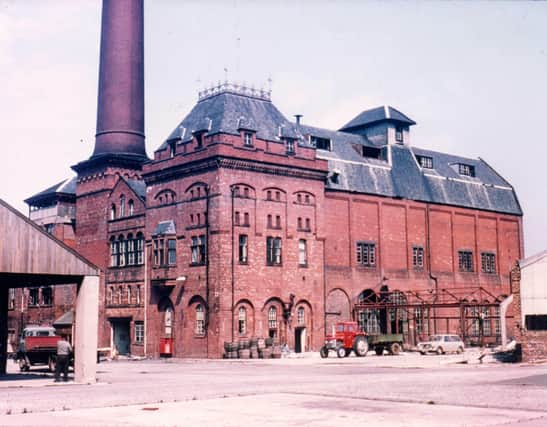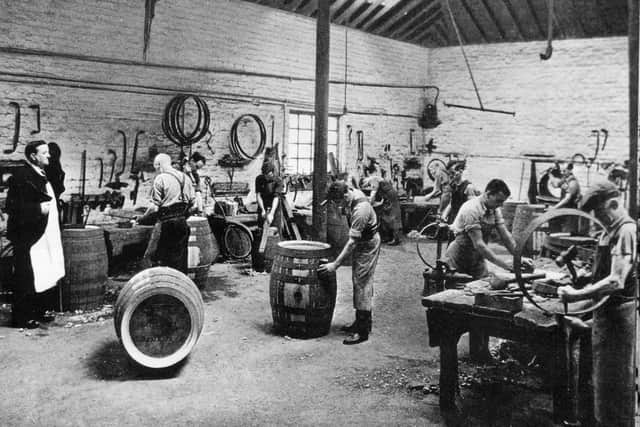The secret side of Falkirk’s Aitken’s Brewery revealed at last


With that in mind, I want to return this week to one of the earliest stories I told in this column eight years ago.
Appropriate too because it is 50 years since Aitken’s famous brewery in Newmarket Street was demolished.
In the early 1960s I worked there for two summers.
Advertisement
Hide AdAdvertisement
Hide Ad

It was a huge undertaking occupying the land presently used by the ASDA supermarket and Hope Street car park, dominated by the big red brick building with its huge chimney.
Aitken’s had been brewing in the town since 1740 and, as well as making the famous ales and porters, they owned pubs all over Scotland including the Newmarket Bar across the road with the admin office up the stairs.
The original works had been on that side but increased demand led to expansion.
As a child I remember seeing the women who worked in the bottling hall sitting outside in front of the big green gate eating their dinner ‘‘pieces’’.
Advertisement
Hide AdAdvertisement
Hide AdOn my first morning at work I was told to report to the coopers’ shop just inside the gate presided over by a man called Willie O’Donnell. However, I was not destined to work alongside these highly skilled men who built and repaired the wooden casks that were still used then.
I was sent into the yard where the used barrels from the pubs were deposited.
I was given the job of knocking out the bung on the side and filling the air hole on the top with a wee wooden peg called a spile.
After that the hogsheads (known as ‘‘huggets’’), barrels, kilderkins (kils) and the wee firkins were ready for checking, washing and rolling down to the racking cellar to be refilled.
Advertisement
Hide AdAdvertisement
Hide AdOnce in a while I was sent down to help the men who were finishing the casks after they were filled.
Sometimes I had to put a wee white pill into each filled barrel (‘‘fish guts’’ they told me) and sometimes I had to pour a dark carmel liquid into selected barrels depending on where they were going: “They like a nice dark pint in Bo’ness” I was told.
But the highlight of my time came after about an hour on day one.
The man I was working with, Tom Boyd from up the Braes, gave me the nod to follow him.
Advertisement
Hide AdAdvertisement
Hide AdHe disappeared into a very narrow passage between the huge water tank and the stone wall.
I followed on, my nose scraping the tank and my back the wall.
A few yards in, a space opened out sealed off from the rest of the world.
There were tables and chairs, pint tumblers, a mirror that said Aitken’s Falkirk Ales and a sign marked ‘‘SITTING ROOM’’.
Advertisement
Hide AdAdvertisement
Hide AdMen were reading the papers and swilling back the ale and Tom was pumping up a pint for me.
“This is the best beer in the brewery” he told me with some pride.
After about ten minutes we returned to the yard with a final heart-warming message: “Its oor turn again in about 45 minutes”.
Around about midday we downed tools again and headed for the ‘‘Murley House’’, a room where beer returned from pubs because it didn’t taste too good was freely available to the workers for about an hour each day.
Advertisement
Hide AdAdvertisement
Hide AdIt tasted foul and when I asked why they drank it when they had the good stuff behind the tank, one man said: “Och, it makes a change”.
The brewery closed its doors in 1968 after a series of mergers and was demolished in 1970.
I wonder if they ever found the sitting room?